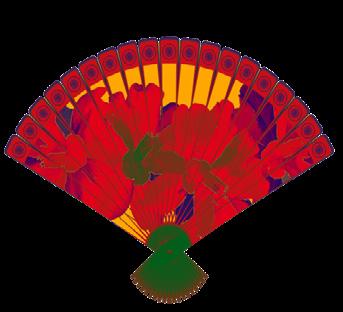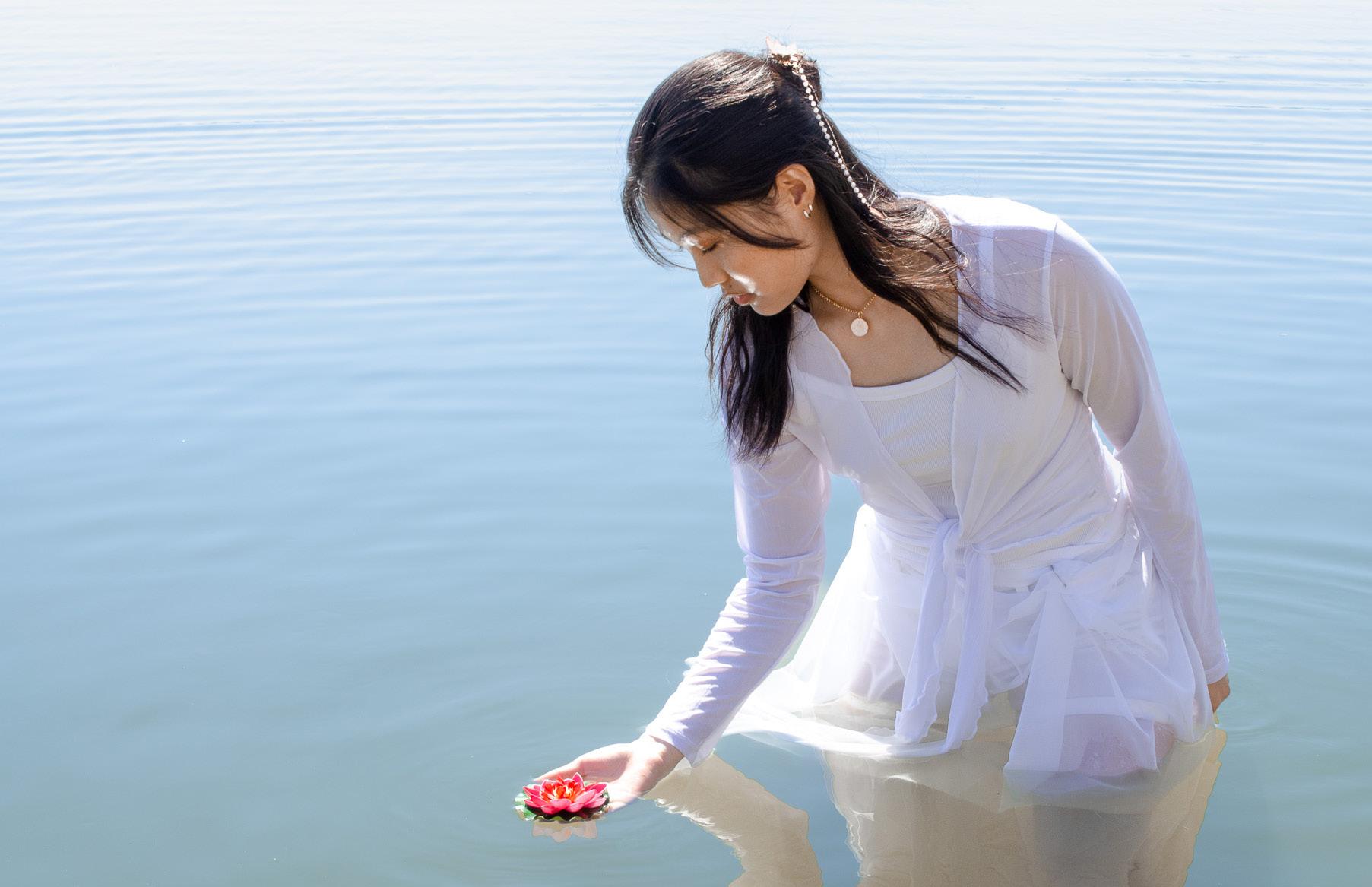
7 minute read
Dancing: Culture & Community
How Asian organizations at UF create a unique environment to build community
written by Aize Hassan
Advertisement
Amidst the beats of a drum, a golden dragon weaves between the audience before leaping onto the stage with a roar. As with tradition, the dragon dance signaled that the show had begun. This past January, the Chinese American Student Association hosted its annual Chinese New Year showcase. The atmosphere was electric, with humorous skits, several appearances from the loong, a Chinese dragon, and most importantly – jaw-dropping dance performances. Dance is a core tenant of many Asian Pacific Islander Desi American organizations on campus. By showing off culture through clothing and expression, dance creates a unique environment to make friends and build a community among Asians on campus.
The Root Of It
Dance is extremely prevalent in Asian culture itself, with each culture having a rich history. People grow up watching these dances during special occasions or holidays: bhangra and Bollywood dance are showcased in Desi weddings, fan dancing is used to celebrate Chinese New Year and bon Odori is performed at the Japanese Obon festival to commemorate ancestors.
Bhangra, fan dancing, bon Odori, Bollywood dance, tinikling and K-pop dancing are just a few of the dances the culture offers and the main focus of APIDA organizations. “In Chinese culture,” said fourth-year CASA dance coordinator, Shailyn Yu, “there’s a lot of dances that include props such as short fans, long fans, ribbons, water sleeves, traditional lions and dragons.”
The difference between assimilation and acculturation is key when understanding the origin of dance within Asian American communities on American college campuses. After the massive and fairly recent wave of Asian immigration to the U.S. in the 1990s, many families have only had the chance to acculturate, or retain one’s culture as a minority while still adopting the majority’s norms. Rather than completely abandoning their native culture, which would be assimilation, young Asian Americans have found a way to showcase their culture through dance at school.


According to Johannah Tador, a second-year who is a dance coordinator for the Filipino Student Association, “Dance is such an easy outlet that people can learn and grow from. Performing specifically brings the community together, and I feel like cultural dance is a great way for people to get that experience without feeling too overwhelmed.”
- Johannah Tador
Although traditional dance can be seen in many school organizations, a common genre that grew through acculturation is Asian American fusion dance. This all started with the popularization of hip-hop throughout the states in the 1990s. As it reached the West Coast, street dancing inspired many East Asian students to incorporate it in cultural showcases. It spread like wildfire and eventually birthed the modern fusion dance that is a hallmark of APIDA organizations.

“Even though we have a lot of traditional stuff that we try to incorporate into our sets, we do love to choreograph and include the modern aspect of dance in our sets as well. We also, this past CNY, wanted to make a fusion set that had both traditional and modern elements,” added Yu.
Home Swamp Home
The University of Florida has had a complicated history regarding Asian demographics over the years. From fall 2011 to fall 2021, the average number of Asian students enrolled at the school was approximately 7.44%, which is considered low compared to its West Coast counterparts. Despite that, UF has made an effort to bring Asian representation to light, starting with the creation of the Asian American Student Union in 1993.
AASU has helped harbor a safe space for the APIDA
community at UF over its 30-year history. Under it, the Chinese American Student Association, the Filipino Student Association, the Korean Undergraduate Student Association and the Vietnamese Student Organization have found a community. These organizations are big contributors to the Asian dance scene on campus, each having its own dance team or committee. Additionally, AASU helped inspire the creation of South Asian organizations and dance teams, such as the Pakistani Student Association, Indian Student Association, Bangladeshi Student Association, Dostana, Gator Bhangra, Gator Adaa and much more. Each organization brings diversity to the table, specializing in all kinds of dance, spanning from traditional to fusion.
AASU’s annual fall showcase helps shine a light on every dance team and organization that can participate, harboring a sense of cultural appreciation for all Asians. “There’s a little event for everyone,” said Radha Seemongal, a third-year student who was part of the Gator Adaa competitive team for her first two years at UF. “It’s really cool to kind of see other cultures and show your culture to other people as well.”
Forming A Community
For many Asian students at UF, joining a dance organization or team is a nobrainer. Dance was something that kept them connected to their culture even before they stepped foot on a college campus. “I was involved with dance before I was at UF. I used to dance classical Indian dance like Bharatanatyam since I was three, then I did Bollywood and some fusion dance since I was five,” added Seemongal. “I’ve been in the dance community for a really long time, so I was really excited to find opportunities here on campus.”

The large number of Asian students that take part in dance has created a sort of culture on UF’s campus in which nondancers are also encouraged to participate. “I originally wasn’t going to dance for freshman Lybah Haque. “My friends convinced me because I saw how well they did during the Mock Gaye Holud and it looked like a lot of fun, so I decided to do it.”

The time commitment to dance varies amongst each organization, but they all provide a steady, consistent time to allocate for practice. “It’s maybe three days a week for two hours,” said Seemongal, referencing Gator Adaa. Similarly, other organizations meet weekly for practice, which helps build relationships. After high school, many students face the shock of having to make an effort to meet up with people in order to build relationships at college. Participating in dance provides the unique experience of harboring relationships on a week-to-week basis within an Asian cultural setting. At UF, there is always a showcase or a competition going on, and they are always a treat to watch.

“They really do become your family.”
“You see those people more than you see your family, and you’re doing something that you love. Especially at a predominantly white institution, it is very gratifying to meet all these people that have the same love and appreciation as you,” said Seemongal. “They really do become your family because there’s so many inside jokes and so many little things.”
Dancing as an APIDA can be a great way to connect with those of similar cultures and connections off of shared ethnic and cultural experiences. This was clear as CASA’s Chinese New Year show went on. The audience shouted and cheered enthusiastically for their friends dancing on stage, a reminder that the bonds developed through dance and culture extends beyond the showcase. They were a family and a community– a community that is connected through tradition, long hours of rehearsal and a common culture of being Asian students at UF.
Different Legends Legend of Miao Shan
Guanyin, although at the time called Miao Shan due to her mortality, was the daughter of a cruel and uncaring king. Per her father’s request, Miao Shan was to take a suitor; however, she did not wish to marry, rather she wished to become a Buddhist monk. Unable to find a suitor that pleased Miao Shan, her father reluctantly allowed her to go live at the temple but instructed the monks to give her the most difficult tasks with no break.
As she diligently worked, the forest animals took pity on her and assisted her with her chores. Outraged, her father set fire to the temple, but Miao Shan extinguished the fire with her bare hands, walking away unscathed. Because of this, her father believed she was possessed by a demon and sentenced her to execution. At her execution, it took the executioner many attempts to kill Miao Shan because every weapon he used would break. Miao Shan felt so bad about the trouble she had caused the executioner that she allowed herself to be murdered and absorbed his karma so that he didn’t have to pay for her death. Upon her death, she descended into the Hell-like realms where she was overcome with grief because of the amount of suffering and horror that was happening. Miao Shan released all of the good karma that she had absorbed throughout her lifetimes which released the souls into Heaven and Earth. In order to prevent the destruction of his kingdom, Yanluo, King of Hell, released Miao Shan back to Earth and to Fragrant Mountain.
It is on Fragrant Mountain that Miao Shan offered up her eyes and arms to a monk in order to make medicine for her ill father. Once her father recovered and found out that it was his own daughter that made the sacrifice, he begged for her forgiveness. At the end of the tale is when Miao Shan transformed into the Thousand Armed Guanyin and was set to reside in Heaven. On her ascent however, she heard cries of suffering from the people of the world and abandoned her original plans. Upon returning to Earth, Guanyin vowed to never leave until all the suffering of the world came to an end.

Guanyin and the Thousand Arms

In this legend, Guanyin vowed to never rest until she had freed all beings from samsara, or the cycle of death and rebirth, which life in the material world is bound to. Despite her strenuous efforts, she realized she was unable to free everyone, causing her much distress and her head to split into eleven pieces. Eventually, her arms also shattered into pieces. Amitabha Buddha came to give her eleven heads to hear the cries from the suffering and a thousand arms so that she could assist as many people as she could. In other depictions of the legend, Guanyin is also given a thousand eyes, some even in her palm, in order to see in all directions. With this form, she represents the omnipresent mother who sees everywhere all at once, senses humanity’s afflictions and extends her arms to alleviate their pain.
Lessons
The current world that we live in is one of great violence and hatred. Within this mess of a fight to end up on top, there are individuals who seek to find value instead. The value of life is something that can be taken from Guanyin. In order for life to be full of love and compassion, one must put the same into the universe first.


